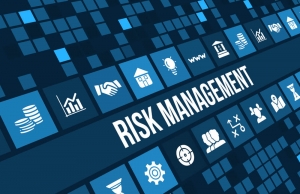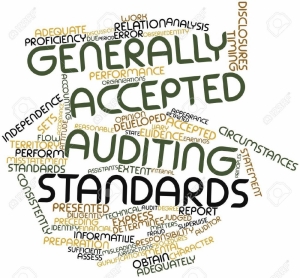عرض العناصر حسب علامة : التخطيط والتنظيم
رسالة ماجستير: تطوير موازنة الوحدات الحكومية الفلسطينية بأسلوب موازنة البرامج والأداء
رسالة ماجستير عن الموازنة وهدف الرسالة ضرورة الانتقال من الأسلوب التقليدي إلى أسلوب البرامج والآداء في إعداد الموازنة العامة للوحدات الحكومية الفلسطينية.
رسالة دكتوراه: البراعة التنظيمية كمتغير وسيط في العلاقة بين القيادة الأصيلة وجودة الحياة الوظيفية
تمثل الهدف الرئيس لورقة العمل في دراسة دور البراعة التنظيمية کمتغير وسيط في العلاقة بين القيادة الأصيلة وجودة الحياة الوظيفية.
مقدمة في إدارة المخاطر
معلومات إضافية
-
المحتوى بالإنجليزية
What is Risk Management?
Risk management encompasses the identification, analysis, and response to risk factors that form part of the life of a business. Effective risk management means attempting to control, as much as possible, future outcomes by acting proactively rather than reactively. Therefore, effective risk management offers the potential to reduce both the possibility of a risk occurring and its potential impact.
Risk Management Structures
Risk management structures are tailored to do more than just point out existing risks. A good risk management structure should also calculate the uncertainties and predict their influence on a business. Consequently, the result is a choice between accepting risks or rejecting them. Acceptance or rejection of risks is dependent on the tolerance levels that a business has already defined for itself.
If a business sets up risk management as a disciplined and continuous process for the purpose of identifying and resolving risks, then the risk management structures can be used to support other risk mitigation systems. They include planning, organization, cost control, and budgeting. In such a case, the business will not usually experience many surprises, because the focus is on proactive risk management.
Response to Risks
Response to risks usually takes one of the following forms:
Avoidance: A business strives to eliminate a particular risk by getting rid of its cause.
Mitigation: Decreasing the projected financial value associated with a risk by lowering the possibility of the occurrence of the risk.
Acceptance: In some cases, a business may be forced to accept a risk. This option is possible if a business entity develops contingencies to mitigate the impact of the risk, should it occur.
When creating contingencies, a business needs to engage in a problem-solving approach. The result is a well-detailed plan that can be executed as soon as the need arises. Such a plan will enable a business organization to handle barriers or blockage to its success because it can deal with risks as soon as they arise.
Importance of Risk Management
Risk management is an important process because it empowers a business with the necessary tools so that it can adequately identify and deal with potential risks. Once a risk has been identified, it is then easy to mitigate it. In addition, risk management provides a business with a basis upon which it can undertake sound decision-making.
For a business, assessment and management of risks is the best way to prepare for eventualities that may come in the way of progress and growth. When a business evaluates its plan for handling potential threats and then develops structures to address them, it improves its odds of becoming a successful entity.
In addition, progressive risk management ensures risks of a high priority are dealt with as aggressively as possible. Moreover, the management will have the necessary information that they can use to make informed decisions and ensure that the business remains profitable.
Risk Analysis Process
Risk analysis is a qualitative problem-solving approach that uses various tools of assessment to work out and rank risks for the purpose of assessing and resolving them. Here is the risk analysis process:
1. Identify existing risks
Risk identification mainly involves brainstorming. A business gathers its employees together so that they can review all the various sources of risk. The next step is to arrange all the identified risks in order of priority. Because it is not possible to mitigate all existing risks, prioritization ensures that those risks that can affect a business significantly are dealt with more urgently.
2. Assess the risks
In many cases, problem resolution involves identifying the problem and then finding an appropriate solution. However, prior to figuring out how best to handle risks, a business should locate the cause of the risks by asking the question, “What caused such a risk and how could it influence the business?”
3. Develop an appropriate response
Once a business entity is set on assessing likely remedies to mitigate identified risks and prevent their recurrence, it needs to ask the following questions: What measures can be taken to prevent the identified risk from recurring? In addition, what is the best thing to do if it does recur?
4. Develop preventive mechanisms for identified risks
Here, the ideas that were found to be useful in mitigating risks are developed into a number of tasks and then into contingency plans that can be deployed in the future. If risks occur, the plans can be put to action.
Summary
Our business ventures encounter many risks that can affect their survival and growth. As a result, it is important to understand the basic principles of risk management and how they can be used to help mitigate the effects of risks on business entities.
مهارات التفويض الفعالة للقادة
من الأمور التي يجب على المديرين الاهتمام بها لكي يكونوا قادة فعالين، هو تعلم كيفية تفويض المسؤوليات التي تعتبر من السمات المميزة للمدير الفعال.
تدقيق بدون ألم!
معايير المراجعة المتعارف عليها Generally Accepted Auditing Standards
دراسة ماجستير: دراسة أثر الضغوط الخارجية والثقافة التنظيمية للمنشأة على تبني ممارسات المحاسبة الإدارية البيئية ودورها في تحسين الأداء البيئي والمزايا التنافسية
أصبحت حماية البيئة والمحافظة عليها إحدى أولويات المنشآت في بيئة الأعمال الحديثة حيث يحتل الاهتمام بالمعايير البيئية موقعاً هاماً للتمييز بين المنشآت وأصبح مراعاة وتطبيق هذه المعايير من أهم مقومات المنشأة لتحقيق التنمية المستدامة والتي تمثل ركيزة أساسية لزيادة قدرتها التنافسية وتعظيم ربحيتها ودرجة نموها وتطورها
دراسة ماجستير: أثر تطبيق أنظمة تخطيط موارد المنشأة ERP على تفعيل الأدوات الحديثة لإدارة التكلفة وتقييم الأداء
12 إستراتيجية للإزدهار بعد جائحة كورونا
مع ظهور الوباء على ما يبدو تحديات جديدة كل يوم، يمكن أن يكون من السهل على شركات المحاسبة وقادتها التركيز على التكتيك الفوري










